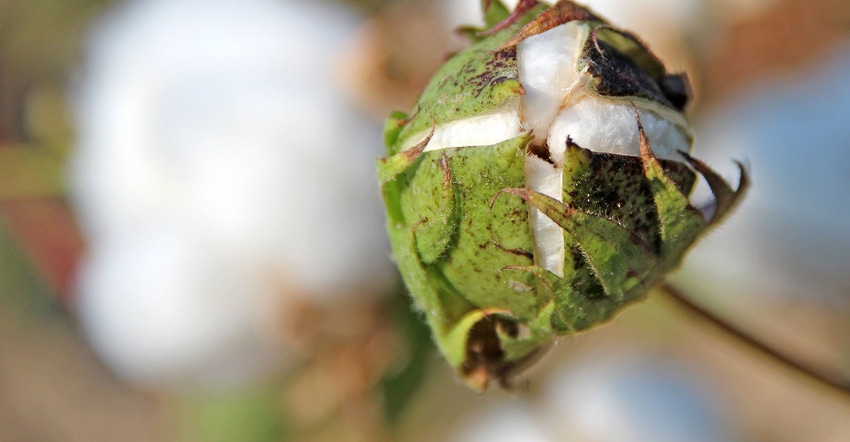
During the 2021 online Beltwide Cotton Conference, a group of panelists discussed why sustainable fiber matters, and how the shift in the market demand is changing the narrative.
The panel of sustainable fiber experts was made up of the Textile Exchange CEO along with U.S. Cotton Trust Protocol Board of Director members.
Textile Exchange
La Rhea Pepper, Textile Exchange CEO, explained a bit about her organization and what they are doing to improve sustainability in the textile industry.
"One of the programs we're using to catalyze action is our goal of 45% reduced CO2 emissions from textile fiber and material production by 2030," Pepper said. "The mission of the Textile Exchange is to inspire people to accelerate the adoption of preferred fibers. When we talk about preferred fibers, we are talking about fibers that are moving along that continuum of improved water use, soil use, as well as improving the overall social impact."
Textile Exchange has adopted several industry standards such as the Organic Content Standard, the Responsible Down Standard, the Responsible Wool Standard, the Recycled Claim Standard, and the Global Recycled Standard.
"Cotton has been a core fiber and focus for us. We have a very strong program called the 2025 Sustainable Cotton Challenge," she said. "We now have 120 brands signed on committing to having 100% of their cotton be sourced from more sustainable solutions and initiatives by the year 2025.
"We have over 425 members, and over 60% of them are brands. We work actively with them to engage them in having a fiber and material strategy across their entire portfolio. It's more important than ever to make sustainable changes. We are an activist organization where we help our members take action to move toward more sustainable solutions."
Textile Exchange is also working with brands and retailers to make a paradigm shift in thinking about sustainability.
"The investments that farmers and mills are making in improving efficiencies and investing in soil fertility and crop rotations have a cost associated with them," Pepper said. "We need to make that shift from price to value paradigm of what is the real intrinsic value of the fiber we're bringing to the marketplace. Because if fiber is also delivering biodiversity and soil conservation and water efficiency, then there's an associated value with those practices, right? Working with brands and retailers to get them to pay the appropriate value to the farmers that are making that investment is an important step."
U.S. cotton: A global leader
Melissa Ho, senior vice president for freshwater and food at World Wildlife Fund, says that sustainability is more important than ever, especially for the textile sector.
"There was a recent McKinsey survey that indicated this over the summer," Ho said. "Now more than ever consumers and brands are doubling down on sustainability commitments. The other piece of this, though, is that sustainability must go beyond just the climate commitments and emissions reductions, which is critical and necessary, but not enough."
The Living Planet Report, which came out last year and comes out every two years since 1970, shows a massive decline globally over the last 40 to 50 years where 70% of terrestrial species and 80% of freshwater species are being lost.
"Species populations are being lost with about a million species at risk of going extinct," she said. "Agriculture, both food and fiber production, is one driving factor of soil degradation, water use, and loss of pollinators. However, it's not just about conservation for conservation's sake. It is about what happens if we lose our water and soil resources as well as the loss of our pollinators. Sustainability is important to the industry to think about for its own survival, not just for the conservation objectives.
"U.S. cotton has a key global leadership role to play since U.S. cotton is expected to be about 15% of the global production throughout the next decade. As a recognized global leader in production, efficiency, innovation, and transparency, especially now with organizations like the U.S. Cotton Trust Protocol, there's a real opportunity for U.S. cotton to be a global leader in sustainability. That is what the Trust Protocol is purveying, continued innovation and commitment to improvement to demonstrate that U.S. cotton is among the most sustainable in the world."
Adopting practices for sustainability
Lori Duncan, Agricultural Sustainability Specialist at the University of Tennessee, provided a localized perspective to the conversation.
"Sustainable fiber matters to our growers and the market demand is desiring more sustainable practices," Duncan said. "A lot of what we do at the university is on-farm research, so we work with growers on specific management practices.
"Sustainability is important to our growers not only because that's where the market is going, but also from the environmental perspective being in the Midsouth. We've been talking about the hypoxic zone in the northern Gulf of Mexico for years now, so there are still issues we need to address. I'm excited to be involved with the Trust Protocol. I think we're going to address many issues here with the market demand as well as environmental issues we're seeing in our areas."
With the adoption of practices such as cover crops and no-till, growers are not only seeing improvements in their soil health but also in their yield efficiency.
"In Tennessee, our cotton acres are around 80% no-till, so we're seeing these practices get rapidly adopted," Duncan said. "Data shows we're seeing yield increases from no-till management and cover crop adoption, but we're not seeing that widespread for 10 years. It's not a short-term answer. Often times, we need economic incentives and cost-share opportunities at the beginning to implement these practices until we see those yield increases to continue practices long-term."
About the Author(s)
You May Also Like




